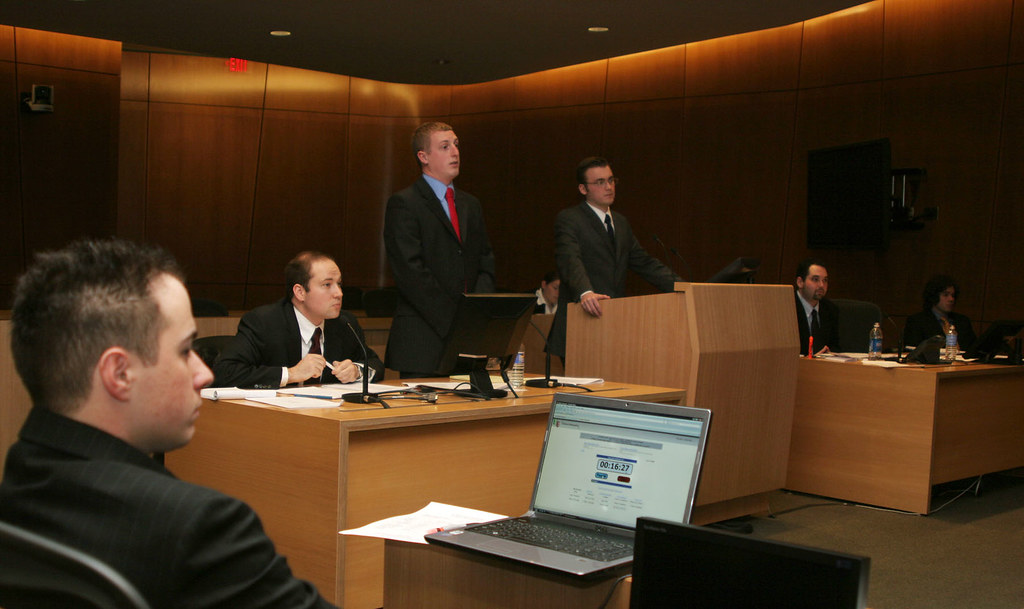What is a Dispositive Motion?
Contents
When it comes to winning a legal case, dispositive motions are a powerful tool in a lawyer’s arsenal. A dispositive motion is a request made to the court to dismiss a case before it goes to trial. This type of motion can be used to dispose of the case entirely or resolve specific issues within the case.
A dispositive motion is commonly of two types — a motion to dismiss the case and a motion for summary judgment. Essentially, a dispositive motion requests a court order to dispose of one or multiple claims so that further court proceedings are no longer required for those claims. As mentioned, a dispositive motion can ask the court to dispose of the entire lawsuit. Indictments can be dismissed or quashed on the basis of a dispositive motion.
In this guide, we will take you through the steps to successfully draft and file dispositive motions. We’ll also provide you with some tips on how to argue your motion effectively in court. Whether you are a practicing attorney or a party representing yourself, this guide will help you understand how dispositive motions work and how to use them to your advantage.
Understanding Dispositive Motions Importance
One of the key reasons why dispositive motions are so important is because they provide an opportunity to narrow down the issues in dispute. By filing a well-crafted motion, you can request the court to rule on specific legal questions or factual issues that are essential to the case. This not only saves time and resources but also enables you to focus on the strongest arguments and evidence that support your position.
Dispositive motions can also serve as a strategic tool to gain leverage in negotiations. When the opposing party realizes the strength of your arguments and evidence, they may be more inclined to settle the case on favorable terms rather than risk an unfavorable judgment. This can lead to a quicker resolution and potentially save both parties from the lengthy and costly process of a full trial.
Here’s a table of dispositive motions commonly encountered in trial order:
| Motion | Description |
|---|---|
| Motion to Dismiss | A motion filed by the defendant to have the case dismissed |
| Motion for Summary Judgment | A motion requesting the court to rule in favor of the moving party based on the absence of any genuine issues of material fact |
| Motion for Judgment as a Matter of Law | A motion requesting the court to enter a judgment in favor of the moving party because the opposing party has failed to present sufficient evidence |
| Motion to Exclude Evidence | A motion seeking to prevent the admission of certain evidence |
| Motion in Limine | A motion asking the court to exclude certain evidence from trial |
| Motion for Directed Verdict | A motion requesting the court to enter a verdict in favor of the moving party because the opposing party has not presented enough evidence to support their case |
| Motion for Judgment on the Pleadings | A motion requesting the court to enter judgment based solely on the pleadings, without the need for a trial |
| Motion for a New Trial | A motion requesting the court to set aside the jury’s verdict and order a new trial |
| Motion for Relief from Judgment | A motion seeking to have a judgment set aside or modified |
| Motion for Continuance | A motion requesting the court to postpone or reschedule the trial |
| Motion for Change of Venue | A motion seeking to have the trial moved to a different location |
| Motion to Quash | A motion seeking to invalidate or cancel a subpoena or court order |
| Motion for Protective Order | A motion seeking to limit or restrict the discovery process or prevent the disclosure of certain information |
| Motion for Sanctions | A motion seeking to impose penalties or sanctions on the opposing party for misconduct or noncompliance with court orders |
| Motion to Compel | A motion requesting the court to require the opposing party to produce certain evidence or comply with discovery requests |
The success of a dispositive motion heavily relies on thorough research, meticulous preparation, and persuasive advocacy. Understanding the legal standards applicable to your case, conducting a comprehensive analysis of the facts and evidence, and presenting your arguments in a clear and compelling manner are essential elements for achieving a favorable outcome.
Types of dispositive motions
A dispositive motion is commonly of two types — a motion to dismiss the case and a motion for summary judgment. Essentially, a dispositive motion requests a court order to dispose of one or multiple claims so that further court proceedings are no longer required for those claims. As mentioned, a dispositive motion can ask the court to dispose of the entire lawsuit. Indictments can be dismissed or quashed on the basis of a dispositive motion.

Dispositive motions are subject to scheduling orders that are set to a deadline. This means that dispositive motions have to be passed within a time frame. This is of particular significance in cases where the defendant fails to present his side of the case or file a motion to dismiss the case within the specific period. In such cases, the plaintiff can initiate the procedure known as the entry of default. It can lead to a default judgment in favor of the plaintiff.
Motion to Dismiss
A dispositive motion raised to plead the dismissal of a case is one way of testing the strength of the allegations made by the other party. When a lawyer requests a motion of this kind, he is basically raising a question about the strength of the allegations made. Are they strong enough to sustain the case? If the judge and jury feel that the allegations have merit, then the dispositive motion is dismissed otherwise the case is dismissed.
This motion is typically used at the beginning stages of a case, usually in response to a complaint or indictment. It argues that the plaintiff or prosecution has failed to state a valid claim or sufficient evidence to proceed with the case. Grounds for dismissal may include lack of jurisdiction, failure to meet the statute of limitations, or failure to state a cause of action. By filing a motion to dismiss, you can potentially terminate the case early on, saving time, resources, and energy.
Motion for Summary Judgment
A summary judgment motion is another kind of dispositive motion which unlike the one designed to test the strength of allegations looks specifically into the facts of the matter. This motion helps ascertain the presence of disputed facts and the need for a jury trial. A summary judgment motion does not replace a jury trial. The Seventh Amendment guarantees a citizen’s right to a jury trial.
This motion is often employed when both parties agree on the facts of the case but disagree on the legal interpretation. By filing a motion for summary judgment, you can seek a swift ruling in your favor without the need for a full trial.
Motion for Judgment on the Pleadings
This motion is filed when the case can be decided based solely on the allegations and documents contained in the pleadings. It argues that there is no need for further factual development or presentation of evidence because the legal issues can be resolved through the pleadings alone. By filing a motion for judgment on the pleadings, you can expedite the resolution of your case without the need for extensive discovery or trial proceedings.
Motion to Strike
This motion is used to remove specific allegations or evidence from the opposing party’s pleadings or filings. It argues that the content is irrelevant, immaterial, scandalous, or prejudicial and should be disregarded by the court. By filing a motion to strike, you can effectively narrow the issues at hand and strengthen your legal position.
Purpose and benefits of filing a dispositive motion
Filing a dispositive motion can be a strategic move in your legal case that can significantly impact its outcome. Understanding the purpose and benefits of filing such a motion is crucial for any attorney aiming to master this aspect of litigation.

The primary purpose of a dispositive motion is to seek a resolution of the case before it reaches trial. By presenting legal arguments and supporting evidence, attorneys can persuade the court to make a final decision in their client’s favor, effectively disposing of the case. This can save both time and resources for all parties involved.
It is important that lawyers know how to use dispositive motions to the advantage of their clients, and also to prevent the other party from invoking dispositive motions to get a case dismissed. It can be the difference between getting justice for your negligence claim and having it dismissed.
Narrow down the issues in dispute.
This allows the court to focus on the essential legal questions at hand, eliminating unnecessary complexities and streamlining the litigation process. By presenting strong legal arguments, attorneys can effectively challenge the opposing party’s claims and potentially secure a favorable outcome without the need for a full trial.
Test the strength of your case early on.
Filing a dispositive motion allows attorneys to assess the likelihood of success and determine the best course of action moving forward. If the motion is granted, it can significantly strengthen your position and increase the chances of a favorable resolution. On the other hand, if the motion is denied, it provides valuable insights into the opposing party’s arguments and helps strategize for future stages of the case.
Strategic advantages beyond the immediate outcome.
It can demonstrate to the court your thorough understanding of the legal issues at stake and your ability to present a compelling case. This can enhance your credibility and reputation as an attorney and potentially influence future litigation.
Potential Counterarguments
When preparing a dispositive motion, it is crucial to anticipate and address potential counterarguments that the opposing party may raise. By doing so, you can strengthen your legal arguments and increase your chances of winning the case.
One effective strategy is to put yourself in the shoes of the opposing counsel. Consider the weaknesses in your own arguments and identify the potential counterarguments that they may utilize. This proactive approach allows you to craft strong responses and preemptively address any concerns or doubts that the court may have.
To effectively anticipate counterarguments, thorough research and a deep understanding of the law and relevant case precedents are essential. By immersing yourself in legal research, you can identify potential loopholes or alternative interpretations that the opposing party may exploit.
Responding to the opposing party’s dispositive motions
When facing an opposing party’s dispositive motions, it is crucial to respond strategically and effectively. These motions seek to dispose of the case in favor of the opposing party without the need for a trial. However, with the right approach, you can effectively challenge these motions and increase your chances of winning your legal case.
- Thoroughly analyze the motion: Carefully review the opposing party’s motion, paying attention to the arguments and evidence presented. Identify any weaknesses or inconsistencies that can be used to your advantage.
- Conduct extensive legal research: To construct a strong response, conduct comprehensive legal research to find relevant case law, statutes, or regulations that support your position. This will help you build a solid legal argument to counter the opposing party’s motion.
- Gather additional evidence: If the opposing party’s motion relies on incomplete or inaccurate facts, gather additional evidence that supports your version of events. This can include witness statements, expert opinions, or documentary evidence that strengthens your case.
- Craft a persuasive response: When drafting your response, ensure it is clear, concise, and persuasive. Present your arguments logically, citing relevant legal authorities to support your position. Address each point raised in the opposing party’s motion and provide compelling reasons why the court should deny their request.
- Anticipate and counter potential arguments: Consider the opposing party’s potential counterarguments and preemptively address them in your response. By anticipating their arguments, you can effectively undermine their position and strengthen your own.
- Seek expert advice if necessary: If you are unsure about how to respond to the opposing party’s dispositive motion, consult with a legal expert or attorney who specializes in the relevant area of law. Their expertise can provide valuable insights and guidance for crafting a compelling response.
- Meet all procedural requirements: Ensure that your response complies with all procedural requirements, including filing deadlines and formatting guidelines. Failure to adhere to these requirements may result in your response being disregarded by the court.
Common pitfalls to avoid when filing dispositive motions
When it comes to filing dispositive motions, it is crucial to navigate the legal landscape with precision and avoid common pitfalls that could jeopardize your chances of winning your case. While dispositive motions can be powerful tools in shaping the outcome of a legal dispute, they also require careful attention to detail and strategic planning.
Filing a dispositive motion prematurely.
Rushing into filing a motion without conducting thorough research and analysis can lead to a weak argument or an incomplete presentation of the facts. It is essential to gather all the necessary evidence, conduct legal research, and consult with experts if needed before proceeding with a dispositive motion.
Failing to anticipate potential counterarguments or weaknesses in your own position.
It is crucial to anticipate how opposing counsel may respond to your motion and address any potential weaknesses or counterarguments proactively. By acknowledging and effectively countering potential challenges, you can strengthen your position and increase the likelihood of success.
Overlooking procedural requirements can be a costly mistake.
Each jurisdiction has specific rules and procedures that must be followed when filing dispositive motions. Failure to adhere to these rules can result in the rejection of your motion or delays in the legal process. It is essential to thoroughly review the local rules and guidelines to ensure compliance and avoid unnecessary setbacks.
Be mindful of the tone and language used in your motion. Being overly aggressive or confrontational in your arguments can alienate the judge and diminish the persuasiveness of your motion. Instead, strive for a professional and objective tone, supported by sound legal reasoning and evidence.
Filing to consider alternative dispute resolution methods before filing a dispositive motion can be a missed opportunity.
Sometimes, resolving the dispute through negotiation or mediation may yield more favorable outcomes for both parties. It is important to evaluate all available options and weigh the potential benefits before committing to a dispositive motion.
Final Word
There is a growing trend toward early dismissal of cases. It is in your interests to have an appellate counsel skilled in defending and attacking summary dispositions, as the case may be. A lawyer knows procedural pitfalls to avoid, failing which the higher courts may be unable to assess arguments based on merits. This means that a lawyer opposing a dispositive motion must be absolutely sure about the arguments to present in the trial court. Any arguments left out during the trial court proceedings may not be admissible in the higher court even if they have merit.
We hope you found our guide on mastering dispositive motions helpful in your pursuit of winning your legal case. Understanding the ins and outs of dispositive motions can be daunting, but by following the steps outlined in this article, you can navigate the legal landscape with confidence. Remember, preparation is key, and with proper research, analysis, and strategic planning, you can increase your chances of success in your case. Good luck, and may justice be served in your favor!




